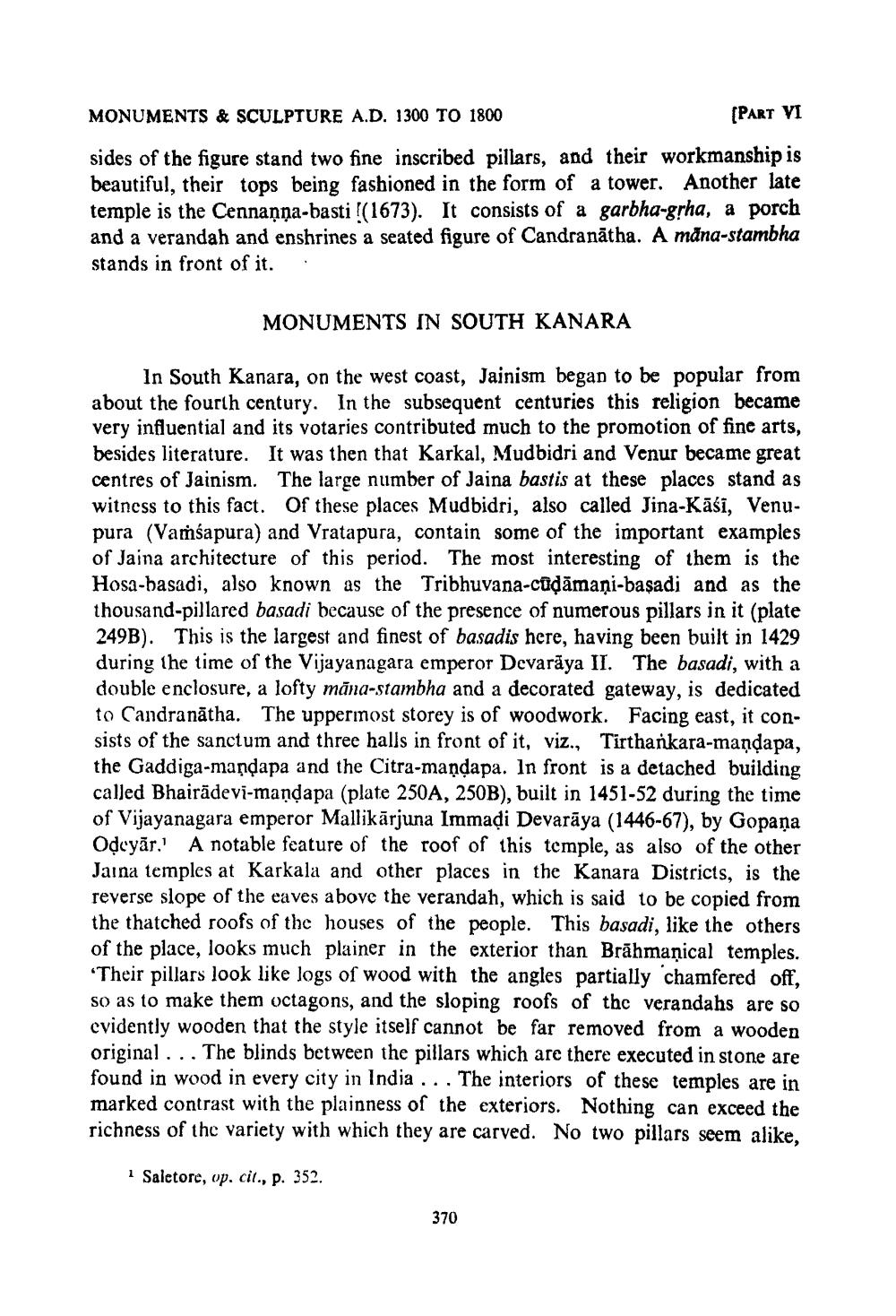________________
MONUMENTS & SCULPTURE A.D. 1300 TO 1800
[PART VI
sides of the figure stand two fine inscribed pillars, and their workmanship is beautiful, their tops being fashioned in the form of a tower. Another late temple is the Cennanna-basti (1673). It consists of a garbha-gṛha, a porch and a verandah and enshrines a seated figure of Candranatha. A măna-stambha stands in front of it.
MONUMENTS IN SOUTH KANARA
In South Kanara, on the west coast, Jainism began to be popular from about the fourth century. In the subsequent centuries this religion became very influential and its votaries contributed much to the promotion of fine arts, besides literature. It was then that Karkal, Mudbidri and Venur became great centres of Jainism. The large number of Jaina bastis at these places stand as witness to this fact. Of these places Mudbidri, also called Jina-Kāśī, Venupura (Vamsapura) and Vratapura, contain some of the important examples of Jaina architecture of this period. The most interesting of them is the Hosa-basadi, also known as the Tribhuvana-cuḍamani-baṣadi and as the thousand-pillared basadi because of the presence of numerous pillars in it (plate 249B). This is the largest and finest of basadis here, having been built in 1429 during the time of the Vijayanagara emperor Devaraya II. The basadi, with a double enclosure, a lofty mana-stambha and a decorated gateway, is dedicated to Candranatha. The uppermost storey is of woodwork. Facing east, it consists of the sanctum and three halls in front of it, viz., Tirthankara-mandapa, the Gaddiga-mandapa and the Citra-maṇḍapa. In front is a detached building called Bhairädevi-mandapa (plate 250A, 250B), built in 1451-52 during the time of Vijayanagara emperor Mallikarjuna Immaḍi Devaraya (1446-67), by Gopana Oḍeyar. A notable feature of the roof of this temple, as also of the other Jaina temples at Karkala and other places in the Kanara Districts, is the reverse slope of the eaves above the verandah, which is said to be copied from the thatched roofs of the houses of the people. This basadi, like the others of the place, looks much plainer in the exterior than Brāhmaṇical temples. 'Their pillars look like logs of wood with the angles partially chamfered off, so as to make them octagons, and the sloping roofs of the verandahs are so evidently wooden that the style itself cannot be far removed from a wooden original... The blinds between the pillars which are there executed in stone are found in wood in every city in India. . . The interiors of these temples are in marked contrast with the plainness of the exteriors. Nothing can exceed the richness of the variety with which they are carved. No two pillars seem alike,
1 Saletore, op. cit., p. 352.
370




